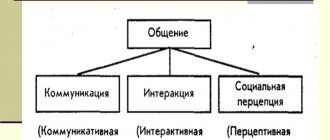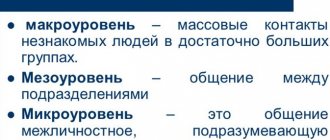The most important component of communication is communication, that is, the exchange of information. If you ask what plays the main role in this exchange, most respondents will name words, speech, language. And they will be wrong. Speech or, as psychologists say, verbal means, of course, are involved in communication, but they account for no more than 20% of the information transmitted. And the remaining 80-90% is transmitted using non-verbal language, mainly sign language, facial expressions and pantomime.
What is kinesics
What is kinesics? This is a science that studies the role of gestures, facial expressions, body movements and other non-verbal manifestations in the process of communication. Some of the first studies of kinesics were carried out by Charles Darwin in his work on the expression of emotions in animals and humans. The concept of “kinesics” was first used by R. Birdwhistell in 1952.
Unlike speech, kinetic manifestations are not so much subject to volitional control. Often they can provide even more information than words. Gestures and facial expressions allow a person to more accurately convey to the interlocutor the meaning of what was said, express his attitude to the information, and reveal details in detail. The listening person, using non-verbal means, reads additional information, can distinguish truth from lies, and can also simply support the speaker and show his concentration on him, for example, by nodding his head or facial expressions.
The creator of this technique
Ray Birdwhistell, an American anthropologist, is the creator of the science of kinesics. It was he who decided to combine his research, as well as the research of his colleagues, and, after analyzing them, came to the conclusion that people use most gestures in certain situations. In 1952, his monograph “Introduction to Kinesics: An Annotated System for Recording Arm and Body Movements” was published.
This publication marked the beginning of the development of kinesics. In his research, the scientist tried to create something similar to a catalog of gestures, which would describe the meanings of gestures and facial expressions that are universal for all peoples. During his travels, Birdwhistell noticed that some peoples have gestures that are used only between themselves, and they communicate with guests in a completely different way. And it was then that the researcher wondered about the relationship between speech and
Ray Birdwhistell was one of the first to become interested in the relationship between gestures and voice pitch. Thus, kinesics is not only the science of gestures, it covers a much larger area.
Facial expressions
Facial expressions are various movements of the facial muscles and their combinations. It is quite weak to control; it is not always possible to restrain an impending smile or frowning eyebrows. With the help of facial expressions, a person can express a whole range of emotions without words: sadness, anger, joy, tenderness, surprise, delight, disappointment, bewilderment and others. More than other parts of the face, the eyebrows and mouth are involved in facial expressions.
There are people with well-developed ability to control their own facial muscles. It is sometimes not possible to correctly recognize their emotions or the veracity of information. They can enhance facial expressions or, conversely, restrain them. However, it is not always possible to completely control these processes during a conversation, so it is necessary to constantly compare the words and facial expressions of such people.
The role of nonverbal communication
Words are good for conveying logical information. At the same time, feelings are better conveyed not verbally.
Researchers estimate that 93% of the information conveyed in emotional communication comes through nonverbal communication channels.
Nonverbal communication is difficult to control even for professional artists. They must interact with the image, which is a complex creative process that is not always possible and requires rehearsal. Therefore, nonverbal communication is much more reliable than verbal communication. We can control some parameters of nonverbal communication. But we will never be able to control all parameters, since a person cannot have more than 5-7 factors in mind at the same time.
Nonverbal communication usually occurs spontaneously and unintentionally. It was given to us by nature as a product of thousands of years of natural selection. Therefore, nonverbal communication is very extensive and compact. By mastering the language of nonverbal communication, we acquire an effective and economical language. By winking, nodding our head, or moving our hands, we convey our feelings faster and better than words.
Sight
Gaze and eye contact with the interlocutor play a huge role in communication. With just your eyes you can express contempt or respect, interest in a conversation or boredom, confidence or shyness. Even the pupils can provide information about a person at a given moment. Dilated pupils often mean emotional excitement and a positive mood, while constricted pupils indicate uncertainty or a bad mood.
The frequency and duration of eye contact also matters. A self-confident person can communicate without almost taking his eyes off the interlocutor. Also, long-term eye contact is established between well-known and close people with whom you can be frank. Jerky glances, lowering the eyes to the floor or constantly looking them to the side can indicate a person’s lack of confidence in himself or in the information he is giving out. Lies, lack of emotional contact with the interlocutor and reluctance to talk are also manifested in a similar way.
Interesting Facts
- There is an interesting way to find out if a person is lying: you need to shake his hand. If she lies, she will be cold, because when a person lies, the body understands this and takes action. The blood goes down to the legs, so that if something happens, you can run as fast as you can.
- A sincere smile lasts no more than four seconds. Moreover, an additional factor of sincerity are wrinkles around the eyes. If a person “pulls up” a smile, then the facial expressions of the eyes will not be affected.
- If a man turns his toe towards her while talking to a woman, this means that he feels sympathy. This is a great way for girls to test young men for interest in them.
- Itching. Oddly enough, itching can tell you a lot, you just have to pay attention to where it occurs. Is the back of your head itchy? This indicates lack of self-confidence. If it is the chin, then the subconscious pushes the person to challenge. If the itching begins in the area of the back of the left hand, you need to “close yourself.” Right hand (also the back side) - the subconscious says that you need to cheat.
- In some cases, facial expressions and gestures of men have a completely different meaning than the same facial expressions and gestures of women.
Gestures
Gestures are voluntary and involuntary movements of the hands and head during communication. Gestures can say a lot about a person himself. Active movements are usually characteristic of people with an extroverted personality, with a sanguine or choleric temperament, a high level of self-confidence and good self-esteem. Individuals with an introverted personality, melancholic, phlegmatic, and insecure people usually display a rather meager range of gestures.
Movements of the head and hands also say a lot about the current state of a person. The more active the gestures, the more interested the person is in the conversation and in being heard. Very weak or absent gestures often indicate that the person is not interested in the conversation. It may also indicate an attempt to deceive the interlocutor.
Three main groups of gestures can be distinguished:
- Communicative. Used in any type of communication, they usually accompany greetings, farewells, and attempts to attract attention to oneself. Examples include shaking or waving your hand.
- Modal. With their help, a person expresses his attitude to the information spoken or heard. For example, nodding your head as a sign of approval or turning away, indicating reluctance to continue the conversation.
- Descriptive. These are gestures that have meaning in the context of the actual conversation. For example, a person uses gestures to show the size of a caught fish or uses them to describe the layout of his house under construction.
It is worth understanding that in different peoples and cultures, gestures can differ and even be opposite. For example, a simple nod of the head means agreement in some countries, and denial in others. Another example is twisting your finger at your temple. In Russia it is interpreted as stupidity, in India as a sign of respect, and in Holland as an indicator of high wit.
Common Gestures
Gestures may vary in meaning from person to person, but there are generally accepted movements that are very common in communication. These include, for example, the following manifestations:
- a person touches or scratches his ears as a sign that he does not like the information he hears;
- rubs his chin – he feels bored and lacks interest;
- strokes his chin - reflects and ponders;
- taps his fingers and constantly glances at the clock - he is in a hurry, nervous or impatient;
- crosses his arms over his chest - most likely, does not want to talk;
- rubs his neck - not sure of the information said or heard;
- puts his hands behind his head or behind his back - trying to demonstrate his superiority over his interlocutor;
- covers his mouth - he is hiding something or is not saying something, perhaps he is providing deliberately false information.
What information does gesture convey?
Despite the fact that research on the topic of nonverbal communication has been conducted for several years, the meaning of studying gestures remains unclear to most people. Why do you need to study it?
- Gestures complement information received verbally. With their help, you can understand the emotional state of the interlocutor, his attitude towards the participants or the very topic of the conversation.
- Using gestures, you can determine how emotionally close the issues being discussed are to a person.
- Usually the gesture appears before the phrase, so you can predict what the person wants to say.
Gait
Gait is the style of movement of a person. It can say a lot about its owner. For example, a heavy gait indicates a person is overwhelmed with thoughts and is depressed. Light, “flying” - about high spirits and optimistic thinking. A person who is hunched over, with his head down and shuffling his feet often turns out to be unsure of himself, while someone who is straightened up and with his chin raised moderately high has good self-esteem and is very confident in himself.
A person with an active lifestyle and prone to taking initiative walks confidently, with long steps and moderate swinging of his arms. People who are unsure of themselves most often hide their hands in their pockets or behind their backs. A thinking person walks slowly, as if tracking his every step. People walk with their chins high and their legs straight, trying to demonstrate their superiority over others.
Pose
When communicating about the interlocutor, his body position can say a lot. This sign is also poorly controlled, since parents from childhood teach the baby to control his gestures and emotions, and pay attention to posture extremely rarely. During communication, the posture may change depending on the content of the conversation and the relationship of the interlocutors with each other.
Thus, psychologists distinguish three groups of postures:
- Open and closed. Openness is evidenced by a relaxed posture, turning the body towards the interlocutor, and open palms. About closedness - crossing legs and arms, tilting the body away from the interlocutor, interlocking fingers, constantly trying to hide the palms.
- Dependent and dominant. The dominant person tries to appear taller, hover over the interlocutor, look down on him, pat him on the back or shoulder. A dependent person lowers his head, averts his eyes, and looks from under his brows.
- Harmonious and opposing. In a harmonious conversation, the interlocutors take positions that correspond to each other. In the event of a confrontation, fists may be clenched, one shoulder is forward, the chin is raised, and the hands are placed on the sides or hips.







